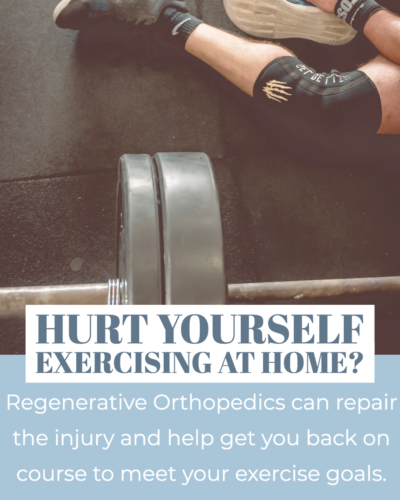
Exercise injuries
Many of us are love exercising. And that’s good because exercise is so much better for us than inactivity. But it’s always important to stay within our range of abilities when exercising. Why? Because going from little or no exercise to a vigorous regimen can set you up for exercise injuries.
Of course, injuries can happen to people from all levels of ability. Yes, even professional athletes and avid exercisers get injured. Exercise injuries can occur suddenly, like during a fall or after lifting weights that are too heavy. They can also be more subtle and transpire over weeks or months. An example of a more subtle injury would be an injury that occurs from using poor form repeatedly.
The risk of injury is genuine from overtraining, poor abdominal support, too lengthy runs, unfamiliarity with gym equipment or exercises, and the use of poor technique or posture. And typical injuries for those who are not used to working out include back pain, tendinitis, and pulled muscles.
Let’s review some tips that can be followed to try to avoid exercise injuries before they happen. When exercising, it’s better to begin by staying closer to the intensity of activity we are accustomed to. For example, don’t go immediately from low intensity to high intensity. Going from zero to 60 in a workout regimen can set you up for exercise injuries.
Secondly, pick activities within your fitness and balance levels and those your body can handle. If the goal is to improve general health and not be sedentary, it’s wise to progress slowly while listening to your body. There is no need to begin with throwing around heavy weights and doing intense workouts. Keep in mind that after periods of inactivity, running, and even vigorous walking can be damaging or cause an exercise injury. Start slowly and work up to longer times and distances.
Sure, you may have been a distance runner in high school. But that doesn’t mean you can jump right into that level of running without proper training. To prevent exercise injuries, start by easing your way into new exercise routines and gradually build up to heavier weights, faster or longer bike rides, and a more vigorous walking or jogging routine.
People make a common mistake by working through the pain felt while exercising, thinking it will eventually go away. The repeated injury from the use of poor form puts too much strain on the joints. These exercise injuries are referred to as overuse injuries and are typical injuries seen by physicians. Tendonitis is an example of an overuse injury from repetitive activity that aggravates the joint. It’s normal to experience muscle soreness after working out, but when that pain lasts more than a few days, that exercise injury has not healed, and it’s time to talk to your doctor.
Seeking the advice of a physician before initiating an exercise program is always recommended. Use a trainer to educate and supervise for proper form, use of equipment, and variety and frequency of exercise. Even those who are accustomed to exercise may also become injured with overuse injuries. So always be aware of the repeated stress various exercises can place on joints, and use proper body mechanics and posturing.
Unaddressed exercise injuries, overuse injuries, and cumulative traumas can damage the joint’s ligaments, tendons, and cartilage. Whether you are riding the waves, running on the beach, pounding the pavement, or climbing some new height, the repetitive low-grade impact can be enough to damage the soft tissues.
When these injuries are not addressed and the soft tissue is not repaired, degeneration of the joint can occur. Unhealed soft tissue makes the joint unstable, which allows for extra and abnormal motion in the joint. These unhealed sports injuries can frequently lead to symptomatic arthritis in later years due to the injured ligaments that cause instability and abnormal joint motion.
In an attempt to stabilize the joint, painful muscle spasms may occur at first. Over time, the body will deposit calcium along the lines of stress, producing bone spurs. Bone spurs are typically a sign that the ligaments were no longer able to stabilize the joint. And the body has sent in reinforcement in the form of additional bone. Arthritis has taken place!
Standard treatments for musculoskeletal injuries resulting in joint pain usually involve symptom management utilizing NSAIDs, cortisone injections, physical therapy, and chiropractic to provide pain relief. These modalities can often provide relief for sports injuries, but for those who have already exhausted these methods and continue to experience pain, Regenerative Orthopedics should be sought. If cartilage damage has taken place, Stem Cell Therapy may be part of the treatment plan.
Regenerative Orthopedics, including Stem Cell Therapy, PRP, and Prolotherapy, are great treatment options that are very effective for injuries that arise from overzealous exercising. Plus, these non-surgical treatments repair those injuries that occur during athletic events, regenerating the damaged ligaments and soft tissue and allowing the exerciser and athlete to continue with their desired activity.
If you’ve injured yourself while trying a new exercise or sport or are a regular exerciser or athlete with a sports injury, Regenerative Orthopedics can get you back to the activity you love.
For more information about sports injuries and older athletes, read our article on “How Arthritis Affects Older Athletes.”
Click here to watch videos from patients who have received Regenerative Orthopedics.